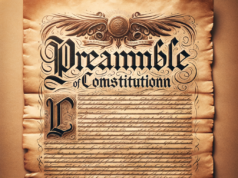Table of Contents
- 1 Understanding the Context: The Role of Amendment Proposals in Legislative Change
- 2 Historical Overview: Key Amendment Proposals That Sparked National Debate
- 3 Analyzing the Controversies: Public Opinion and Political Reactions to Amendments
- 4 The Process of Proposal: How Amendments Are Crafted and Introduced
- 5 Case Studies: Examining Notable Amendment Proposals and Their Impact
- 6 Looking Ahead: Future Trends in Amendment Proposals and Legislative Reform

In the ever-evolving landscape of American governance, amendment proposals serve as a critical mechanism for enacting legislative change. However, the journey from proposal to ratification is often fraught with controversy, revealing deep-seated divisions within public opinion and political spheres. This article delves into the complexities surrounding amendment proposals, exploring their historical significance, the controversies they ignite, and the future of legislative reform.
Understanding the Context: The Role of Amendment Proposals in Legislative Change
Amendment proposals are essential tools that allow for the modification of existing laws or the introduction of new legal frameworks within the United States. Rooted in the Constitution, the amendment process is designed to be rigorous, requiring a supermajority for approval either in Congress or through state legislatures. This high threshold ensures that only proposals with substantial public support can alter the foundational legal structure of the nation. As societal values shift and new challenges emerge, amendment proposals become a focal point for debate, reflecting the dynamic relationship between the government and the governed.
Historical Overview: Key Amendment Proposals That Sparked National Debate
Throughout American history, several amendment proposals have ignited significant national discourse, shaping the political landscape in profound ways. The Equal Rights Amendment (ERA) of the 1920s aimed to guarantee equal legal rights for all American citizens regardless of sex, yet it remains unratified, highlighting the contentious nature of gender equality in legislation. Similarly, the proposed Balanced Budget Amendment has resurfaced periodically, reflecting ongoing concerns about fiscal responsibility and government spending. These historical examples illustrate how amendment proposals can encapsulate broader societal conflicts, often serving as catalysts for change or, conversely, as points of contention that reveal the fractures within American society.
Analyzing the Controversies: Public Opinion and Political Reactions to Amendments
Controversies surrounding amendment proposals often stem from divergent public opinions and political ideologies. For instance, the debate over gun control amendments has polarized the nation, with proponents advocating for stricter regulations citing public safety, while opponents argue for the preservation of Second Amendment rights. Such divisions are further exacerbated by political actors who leverage these issues to galvanize their bases, often leading to heightened tensions and entrenched positions. Polling data frequently reflects this polarization, revealing that while some amendments may enjoy broad support, others can become flashpoints for deeper ideological battles, complicating the path to consensus.
The Process of Proposal: How Amendments Are Crafted and Introduced
The process of crafting and introducing amendment proposals is intricate and often lengthy. Typically, amendments can be proposed either by a two-thirds majority in both houses of Congress or by a constitutional convention called for by two-thirds of state legislatures. Once proposed, amendments must then be ratified by three-fourths of the states, a process that can take years or even decades. This rigorous framework is intended to ensure that only those amendments with widespread support and careful consideration make it into the Constitution. However, the complexity of this process can also lead to frustration among advocates seeking swift legislative change, as the political climate can shift dramatically over time.
Case Studies: Examining Notable Amendment Proposals and Their Impact
Examining notable amendment proposals provides insight into their potential impact on American society. The proposed Equal Rights Amendment serves as a case study in both the power and limitations of amendment proposals. Despite gaining significant momentum in the 1970s, the ERA ultimately fell short of ratification, illustrating the challenges of achieving consensus on social issues. Conversely, the 26th Amendment, which lowered the voting age to 18, showcases how successful amendments can reflect and respond to the evolving values of society, particularly in the context of youth activism during the Vietnam War. These case studies highlight the diverse trajectories of amendment proposals and their ability to either catalyze change or become emblematic of societal divisions.
Looking Ahead: Future Trends in Amendment Proposals and Legislative Reform
As the political landscape continues to evolve, the future of amendment proposals is likely to be shaped by emerging social movements and technological advancements. Issues such as climate change, electoral reform, and digital privacy are gaining traction, potentially leading to new amendment proposals that address these pressing concerns. Additionally, the rise of grassroots activism and social media may facilitate greater public engagement in the amendment process, allowing for a more inclusive dialogue around legislative reform. However, the entrenched political divisions that characterize contemporary discourse may also pose significant challenges, suggesting that the path forward will require both innovation and compromise.
The complexities surrounding amendment proposals reveal much about the American political system and the ongoing struggle for legislative change. As society grapples with evolving values and pressing challenges, the role of amendments will remain pivotal in shaping the future of governance. Understanding the historical context, analyzing public opinion, and examining the processes involved will be essential for navigating the controversies that lie ahead, ultimately determining how effectively the nation can adapt to the demands of its citizens.
























